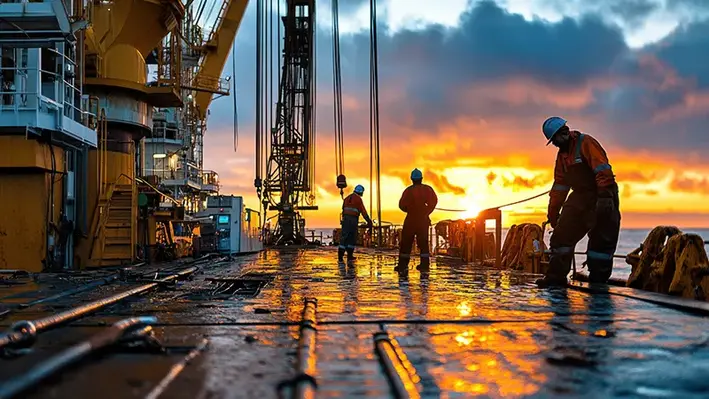
 Since announcing the acquisition of Harbour Energy's Vietnam business in July, EnQuest has wasted no time in getting to grips with its new assets.
Since announcing the acquisition of Harbour Energy's Vietnam business in July, EnQuest has wasted no time in getting to grips with its new assets.
The company recently confirmed that several well intervention projects had gone ahead and been successfully completed.
In July, EnQuest confirmed that it had completed the acquisition of Harbour Energy's business in Vietnam for a 53.125% equity interest and operatorship of the Chim Sáo and Dua production fields (Block 12W) in a transaction valued at around US$85mn.
Since signing the deal, EnQuest reported that the Vietnam asset team has successfully completed a planned annual maintenance shutdown, on time and within budget, and executed three of six scheduled well intervention scopes, which have added around 1,200 barrels of oil equivalent per day (boepd) of gross production.
“Net asset production in the first half of 2025 averaged 5.7 kboepd, with the potential for further in-year upside relating to well intervention activity and performance and the positive impact of a production-enhancing chemical soaking process undertaken during the shutdown,” a recent EnQuest statement noted.
The Vietnam acquisition was soon followed by a separate announcement with EnQuest awarded a production-sharing agreement (PSC) for offshore Block C in Brunei Darussalam, as it grows its footprint across the region.
Block C hosts the condensate-rich gas discovered fields of Merpati, Meragi and Juragan.
Alongside another recent award of PSCs in Indonesia, EnQuest continues to grow its business beyond its core Malaysia operations, where it recently celebrated 10 successful years.
In June, the company was recognised at at the Petronas Emerald Awards ceremony in Kuala Lumpur as Malaysia’s ‘Operator of the Year’ and also landed an additional award for ‘Abandonment Excellence’.
After announcing the Vietnam acquisition, EnQuest CEO, Amjad Bseisu, said South East Asia remains central to the group’s overall growth and diversification strategy.
“We are excited by the opportunity to utilise our proven operating expertise to optimise, enhance and extend the Block 12W assets in Vietnam,” he said.
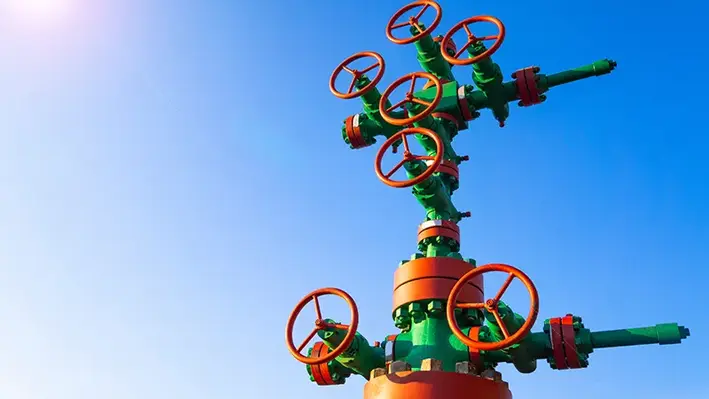
 South Natuna Sea Block B has seen a marked boost in first production from MedcoEnergi's Terubuk Well Head Platform M Project.
South Natuna Sea Block B has seen a marked boost in first production from MedcoEnergi's Terubuk Well Head Platform M Project.
Terubuk's production capacity has reached 6,600 bopd of oil and 60 mmscfd of gas, neeting significant energy security and production targets.
Topside fabrication for the project was completed within six months, well below the average offshore project duration of 10 - 12 months. All phases of the project were executed entirely by Indonesian talent, underscoring the nation's ability to deliver world-class solutions in the energy industry.
The Terubuk Project, which includes WHP-L and WHP-M saw a quick turnaround with the implementation of MedcoEnergi's Digital Microwave Radio and Integrated Control & Safety Systems for remote monitoring and control, to enhance operational efficiency and reliability.
Director and chief operating officer MedcoEnergi, Ronald Gunawan, said, "We appreciate the full support from the Government, SKK Migas, the Ministry of Energy and Mineral Resources, and all involved parties, which enabled WHP-M to reach the sail away and onstream stages in a relatively short time. The innovation in this project management sets a new standard for rapid, efficient, and sustainable marginal field development, and reflects the capabilities of our nation's talent in delivering energy projects.”
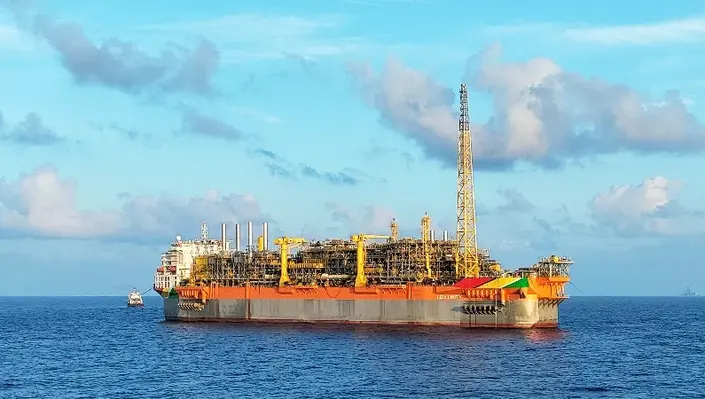
 ExxonMobil Guyana has started production at Yellowtail field, the fourth oil development in Guyana’s offshore Stabroek block.
ExxonMobil Guyana has started production at Yellowtail field, the fourth oil development in Guyana’s offshore Stabroek block.
Yellowtail’s ONE GUYANA floating production storage and offloading (FPSO) vessel joins the Destiny, Unity, and Prosperity FPSOs, bringing total installed capacity in Guyana to more than 900,000 barrels of oil per day.
“Yellowtail’s ahead-of-schedule startup is a significant milestone for ExxonMobil and the people of Guyana,” said Dan Ammann, President of ExxonMobil Upstream Company. “With Guyanese making up more than 67% of the country’s oil-and-gas workforce and over 2,000 local businesses engaged, this project reflects our deepening roots in the country and our shared commitment to long-term, inclusive growth.”
The ONE GUYANA is the largest FPSO on the Stabroek block to date, with an initial annual average production of 250,000 bopd and a storage capacity of two million barrels. Oil produced from the FPSO will be marketed as Golden Arrowhead crude.
By 2030, ExxonMobil Guyana expects to have total production capacity of 1.7 million oil equivalent barrels per day from eight developments.
ExxonMobil has experienced remarkable success in Guyana’s deepwater developments, achieving record production in 2024. In five years, the company has started up four complex offshore mega-projects under budget and ahead of schedule – while advancing plans for four additional projects by the end of the decade.
ExxonMobil Guyana Limited operates the Stabroek block and holds a 45% interest, with Hess Guyana Exploration Ltd. holding 30%, and CNOOC Petroleum Guyana Limited holding 25%.
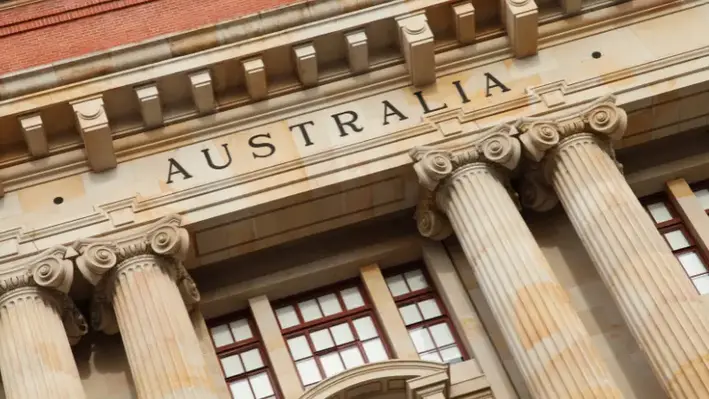
 Integrated energy services giant, Kent, has been awarded a technical advisory services contract by the Australian Government to support the permanent plugging and abandonment of the Laminaria-Corallina fields in the Timor Sea.
Integrated energy services giant, Kent, has been awarded a technical advisory services contract by the Australian Government to support the permanent plugging and abandonment of the Laminaria-Corallina fields in the Timor Sea.
The contract also includes advisory services for the removal of associated subsea infrastructure within the fields.
The award underscores Kent’s position as a trusted decommissioning partner following its existing work conducted on the Northern Endeavour FPSO facility, as well as its expanding footprint within the APAC region. Under the initial two-year contract, Kent will deploy a team of technical and regulatory experts to provide strategic and operational support throughout the decommissioning phase.
Michael Costello, Executive Vice President – Development, APAC & Americas, said, “This contract is a testament to the trust the Australian Government has placed in Kent’s decommissioning expertise. We are proud to continue supporting the safe and responsible transition of offshore assets, prioritising environmental outcomes and technical integrity at every stage.”
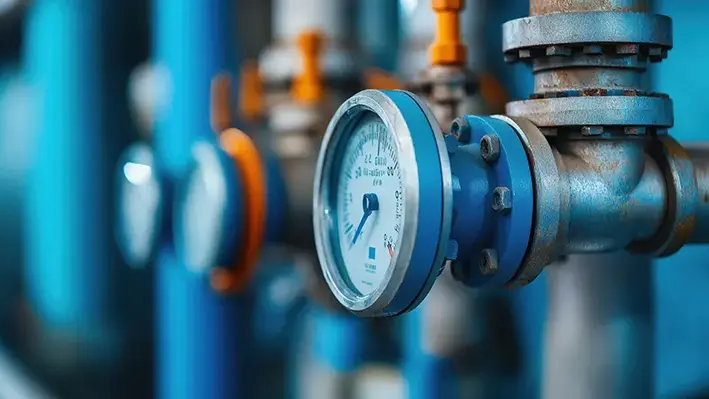
 Following horizontal well completion activities in the Lower Selma Chalk area of the Gwinville Field, Mississippi-focussed producer, Southern Energy Corp, has reported average natural gas rates at 3.6 MMcfe/d (99% gas), a marked rise from the original LSC horizontal wells. Ever since, the company has been tapping into its commercial value, driven by the exceptional well flow to facilities.
Following horizontal well completion activities in the Lower Selma Chalk area of the Gwinville Field, Mississippi-focussed producer, Southern Energy Corp, has reported average natural gas rates at 3.6 MMcfe/d (99% gas), a marked rise from the original LSC horizontal wells. Ever since, the company has been tapping into its commercial value, driven by the exceptional well flow to facilities.
This comes from the first of the company's three remaining drilled but uncompleted (DUC) horizontal wells from the Q1 2023 drilling programme, the GH LSC 13-13 #2 wellbore.
The well was stimulated with 25 fracture stages, placing over 5.3 mn lbs of proppant into the wellbore. While this increased proppant intensity by a striking 70%, targeted stimulation design changes boosted the predictability and speed of the fracture operations. To top that, it reduced the overall completion cost down to US$2.2mn by more than 10% below pre-job estimates. This and other cost savings have allowed the company to cut down such operational budgets by 20%.
Southern will continue to monitor both regional natural gas pricing and well performance from the GH LSC 13-13#2 over the upcoming months before making a decision on the completion timing of the remaining two DUC wells and will update the market at that time. The remaining two DUC wellbores have been drilled in the LSC and City Bank formations.
Ian Atkinson, President and Chief Executive Officer of Southern, said, “We are very pleased with the early flowback results of the GH LSC 13-13 #2 well that will help us establish a longawaited type curve for the remaining potential 60+ LSC horizontal locations in our vast Gwinville inventory. We expect the lower decline from the LSC reservoir to support the ~ 3.5 Bcfe recovery per well predicted by both management and our third-party reserve evaluator. The Southern operations team has safely executed this operation at 10% below our original completion estimate, which not only drives a much quicker payout on this capital but will also allow Southern to start redeveloping the Gwinville Field much sooner as natural gas prices are still expected to improve materially into the back half of 2025 and continue into 2026.
"From a revenue generation perspective, since bringing these significant new production volumes on-line in late June with minimal incremental operating costs, Southern has also greatly benefited from a daily natural gas basis premium of approximately 17% above Henry Hub pricing due to the start of warmer seasonal temperatures and associated natural gas fired power demand in the southeast U.S. which we expect to continue or improve throughout the summer. We look forward to providing these improved cash flow results from additional Q3 volumes in November 2025.”

 As part of sustainability-driven initiatives to expand domestic energy production in the US Gulf of America, bp has started up the Argos Southwest Extension project.
As part of sustainability-driven initiatives to expand domestic energy production in the US Gulf of America, bp has started up the Argos Southwest Extension project.
This development is the first of a decade-long initiative by the oil major.
The project will generate an additional 20,000 barrels of oil equivalent per day of gross peak annualised average production at the existing Argos platform. Argos, which began production in 2023, is bp’s fifth operated production platform in the Gulf of America with a gross production capacity of up to 140,000 barrels of oil per day.
“The Argos expansion underpins our commitment to investing in America, growing our US offshore energy production safely and efficiently,” said Andy Krieger, bp’s senior vice president for the Gulf of America and Canada. “This project also kicks off a period of significant growth for bp in the Gulf of America, which will continue to play a critical role in delivering secure and reliable energy the world needs today and tomorrow.”
The Argos Southwest Extension project will add three wells and include a new drill center roughly 5 miles southwest of Argos. The subsea tieback, which connects new wells to existing offshore production facilities through pipelines, will extend the footprint of the Mad Dog field discovered in 1998.
The Argos Southwest Extension project was delivered seven months ahead of schedule by implementing concurrent workstreams, optimising project management and engaging in early procurement.
“Argos’ expansion project demonstrates how bp can swiftly bring new barrels to market safely and efficiently,” said Gordon Birrell, bp’s executive vice president of production and operations. “Our ability to move from resource discovery to first oil at record pace underscores our relentless pursuit to grow shareholder value.”
Following Argos Southwest Extension, bp plans to deliver two additional expansion projects in the Gulf of America by 2027.
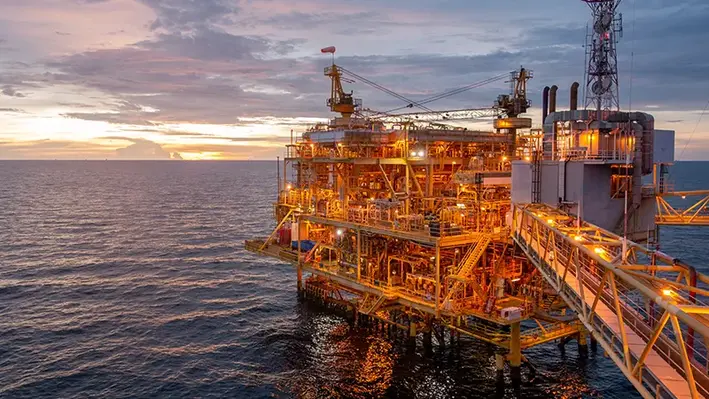

Well-Safe Solutions has secured a significant multi-year contract with EnQuest.
The scope, expected to generate over US$45 million in revenue, will be carried out using the Well-Safe Defender and involves a minimum of 100 days of operations in 2026 and at least 130 days in 2027. The contract also includes options for additional work between 2028 and 2034, establishing a long-term strategic partnership and securing key supply chain resources in the North Sea well into the next decade.
This contract marks a major milestone for Well-Safe Solutions, reinforcing its position as a leading player in the UK decommissioning sector. It also reflects the company’s strategic shift in the first half of 2025 to offer full well lifecycle services in response to rising demand for integrated, multi-phase campaigns.
Phil Milton, Chief Executive Officer at Well-Safe Solutions, said, “This contract is a testament to the trust our clients place in us and the consistent performance of our teams. It marks a pivotal moment in our journey and sets the tone for the next phase of our growth.”
Despite the challenges facing the sector in 2025, this award represents a significant turning point. The industry is preparing for an anticipated rise in demand from 2026 onwards, at a time when the availability of mobile offshore drilling units (MODUs) has sharply decreased. With only seven semi-submersibles currently in or near the region—many either committed long-term or stacked—market capacity remains tight.
Chris Hay, Chief Commercial Officer at Well-Safe Solutions, added, “This contract award reflects not only Well-Safe’s technical capabilities but also its ability to respond to market needs with agility. We’re proud to support EnQuest in this critical campaign and look forward to delivering a safe and efficient operation.”
The contract award follows successful decommissioning campaigns completed with several other UKCS clients using the Well-Safe Defender and Well-Safe Protector, highlighting Well-Safe’s reputation for operational excellence. Since its mobilisation in April 2023, the Well-Safe Defender has consistently delivered top-quartile performance, with rig uptime exceeding 98%, thanks to the dedication and collaboration of both offshore and onshore teams.
Steve Bowyer, EnQuest’s North Sea Managing Director, commented on the contract, “EnQuest is delighted to have chosen Well-Safe Solutions to support the next phase of our Group decommissioning plans. Having completed the plugging and abandonment of more than 35% of all wells decommissioned across the northern and central North Sea over the past three years, EnQuest is proud to be one of the most prolific decommissioning operators in the North Sea, employing innovative technologies and operating techniques to deliver top-quartile decommissioning performance. Accordingly, we look forward to executing the upcoming activity in a safe and efficient manner, alongside the Well-Safe team.”

 Decom Engineering has appointed Nick McNally as managing director, to drive ahead the company's strategy on accelerating international expansion, scaling operations and strengthening its position as a leading provider of patented cutting technologies to the global energy industry
Decom Engineering has appointed Nick McNally as managing director, to drive ahead the company's strategy on accelerating international expansion, scaling operations and strengthening its position as a leading provider of patented cutting technologies to the global energy industry
McNally was formerly the company’s commercial director, under whose leadership Decom has rolled out a new ultra-light Chopsaw with improved cutting performance, which has been deployed across complex subsea projects in challenging offshore environments, and the company has experienced recent project wins in Australia, South America and Europe.
The company has also consolidated operations in Aberdeen, closed its Northern Ireland facility, and restructured its internal systems and roles. The company is actively progressing ISO certification as well as additional IP coverage and is engaged with the Fit for Offshore Renewables programme, enabling greater access to clean energy markets and expanding opportunities in offshore wind.
Decom plans to expand its workforce from 16 to over 25 staff within the next 18 months, with new roles across engineering, operations, and business development.
McNally said, “This is an exciting new stage for Decom as the business evolves from a highly respected niche engineering firm into a globally recognised technology partner.
“With new markets opening up and recent contract wins in Australia, Brazil and the Gulf of Mexico, the opportunities ahead are considerable and my focus will be on building the infrastructure, capability and culture to meet that growth head-on.”
“With international demand growing and increasing interest in our cutting technology, we’re focused on scaling responsibly, strengthening our systems, investing in our people and remaining agile, which enables us to move into new markets such as offshore wind and onshore decommissioning.”
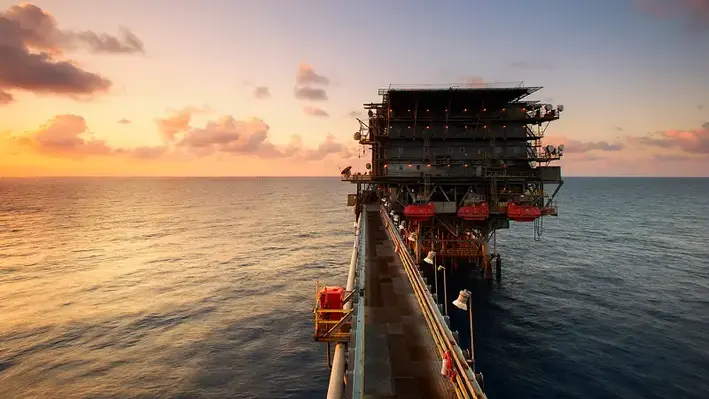

Saudi Arabia’s ADES International Holding has signed a deal to acquire rival offshore rig operator Shelf Drilling in a transaction valued at US$379.8mn.
The deal, subject to shareholder approval and other closing conditions, is expected to complete in the fourth quarter of 2025.
Once finalised, the combined entity will operate 83 offshore jack-up rigs, including 46 premium units, across key shallow-water basins worldwide, with a total backlog of US$9.45bn as of 30 June 2025.
ADES anticipates achieving annual operational cost synergies of US$40mn-50mn over the medium term and plans to settle Shelf Drilling’s existing debt obligations. The company also said it would work to optimise the new group’s capital structure and operational efficiency.
Dr. Mohamed Farouk, CEO of ADES, said, "Over the past years, we have unlocked new geographies and deepened our strategic reach. With this landmark transaction, we reinforce our position as a market leader in shallow-water offshore drilling, offering superior services to our client base alongside enhanced scale, asset quality and operational reach.
“As part of the transaction, we will add 33 jackups and a dedicated, experienced workforce, supporting expansion into additional regions and further strengthening our global footprint.”
“Today’s announcement delivers immediate and compelling value to our shareholders, reflecting both the strength of our business and the dedication of our employees. Over the past 13 years, Shelf Drilling has built a resilient company with an outstanding safety track record and a reputation for operational excellence.
“This transaction unites two highly complementary organizations, and we are confident that the combination will unlock the full strategic value of our global fleet and operations. We look forward to working closely with the ADES team to ensure a seamless and successful integration,” said Greg O’Brien, CEO of Shelf Drilling.
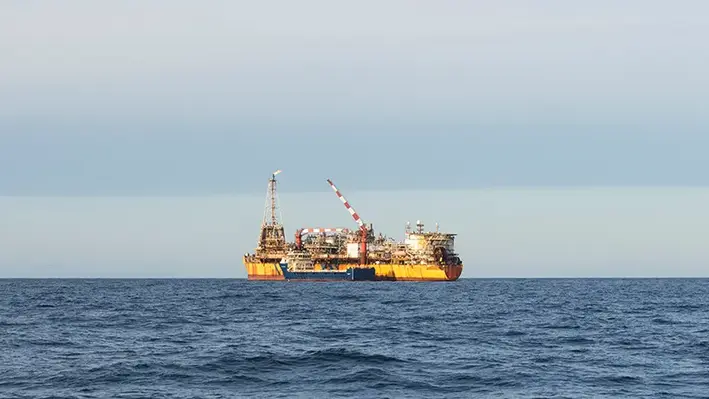
 The Agogo FPSO has generated first oil for the National Agency for Petroleum, Gas and Biofuels (ANPG) and Azule Energy, actualising the much anticipated Agogo Integrated West Hub project offshore Angola
The Agogo FPSO has generated first oil for the National Agency for Petroleum, Gas and Biofuels (ANPG) and Azule Energy, actualising the much anticipated Agogo Integrated West Hub project offshore Angola
This comes in less than three years since the Agogo IWH project began in February 2023, with a phased development approach. It involved appraising-driven process, de-risking the full field exploitation. With a well-coordinated effort to simultaneously manage activities across reservoir, engineering and procurement, the deepwater project is said to have been achieved in record time.
The Agogo project involves the development of two fields, Agogo and Ndungu, in the West Hub of Block 15/06. The Agogo IWH project operated by Azule Energy in Block 15/06, with a 36.84% stake alongside partners Sonangol E&P (36.84%) and Sinopec International (26.32%), is set to add substantial production to Angola's energy landscape. Together, the two fields have estimated reserves of approximately 450 million barrels, with projected peak production of 175,000 barrels per day, produced via two FPSOs (Agogo and Ngoma).
An ode to technological innovation and lower-emissions future, all topsides and marine systems of the Agogo FPSO are designed to be fully electric. Touted as a 'green' FPSO, it features a pilot carbon capture and utilisation/storage (CCUS) unit to recover remaining CO2 volumes. Additionally, the FPSO benefits from combined cycle power generation.
"This new milestone that we have recorded in the Agogo Project reinforces our certainty that we have made the right investment in technological innovation and the valourisation of Angola's natural resources, in an industry where it is essential to combine sustainability, efficiency and inclusion procedures. It is worth highlighting that this is an FPSO prepared to reduce carbon emissions, aligning with energy transition objectives. Furthermore, it demonstrates a strong investment in national human capital, with 80% of the workforce comprised of Angolans,' said the chairman of the Board of Directors of ANPG, Paulino Jerónimo.
"The startup of the Agogo IWH project, sanctioned just months after Azule Energy's formation, represents a defining moment for our company," said Adriano Mongini, CEO of Azule Energy. "It demonstrates not only our technical capabilities but also our firm commitment to supporting Angola's energy landscape. This achievement advances our production goals whilst showcasing our dedication to responsible energy practices through pioneering emission reduction initiatives. We are immensely proud to contribute to Angola's energy future and to set new standards for environmental responsibility in offshore operations."

 Australia's Centre of Decommissioning (CODA) has released a new study exploring the infrastructure, capabilities and regulatory systems required to support offshore oil and gas decommissioning in the Northern Territory.
Australia's Centre of Decommissioning (CODA) has released a new study exploring the infrastructure, capabilities and regulatory systems required to support offshore oil and gas decommissioning in the Northern Territory.
Its new Northern Territory Decommissioning Location Study evaluates ports and surrounding industries that could facilitate the dismantling, recycling and disposal of equipment recovered from the Browse and Bonaparte basins over the next 40 years.
The study confirms there are “credible opportunities” for the Northern Territory, that are most relevant to subsea infrastructure and mooring systems associated with assets such as Northern Endeavour, Montara, Blacktip, Barossa and Ichthys.
CODA’s CEO Francis Norman said the report highlights the importance of coordinated planning and investment across jurisdictions.
“The Northern Territory has a real opportunity to play a role in Australia’s offshore decommissioning future,” said Norman.
“By identifying practical pathways to build local capability and work in alignment with national infrastructure, this study supports a more collaborative and connected approach to end-of-life asset management.”
Specifically, Darwin Harbour offers multiple viable receival points, including the East Arm Wharf, Marine Supply Base, Darwin Ship Lift and the proposed Middle Arm Module Offloading Facility, the report notes.
The study also highlights that intermittent demand and limited local waste treatment capacity present challenges to establishing a dedicated and continuous decommissioning industry in the Northern Territory.
The findings also reinforce the importance of clear regulatory processes and long-term infrastructure planning.
This includes opportunities to integrate with national waste treatment networks and future facilities such as the Chandler geological repository and Whyalla’s Electric Arc Furnaces.
The study was commissioned by CODA and developed by Kent, drawing on its global decommissioning expertise to assess infrastructure needs and opportunities in the Northern Territory.
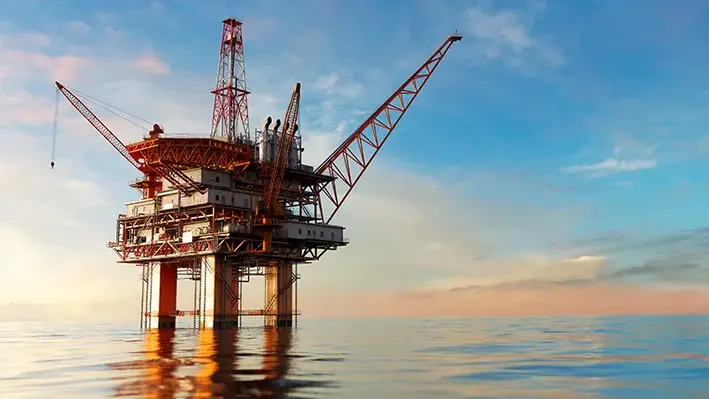
 Expro has reported robust financial results for Q2 2025, supported by strong operational execution and new technology deployments across key offshore markets, including the North Sea.
Expro has reported robust financial results for Q2 2025, supported by strong operational execution and new technology deployments across key offshore markets, including the North Sea.
The company posted US$423mn in revenue—exceeding its guidance—and delivered an adjusted EBITDA margin of 22%, marking its third consecutive record quarter. Free cash flow reached US$27mn, with adjusted free cash flow at $36 million.
CEO Michael Jardon credited the company’s consistent growth to strategic investment, cost discipline, and global execution, “Our new business wins are a testament to the trust our customers place in Expro and highlight our commitment to safety, service quality, and the delivery of cost-effective, technology-driven solutions throughout the well lifecycle.”
In the UK North Sea, Expro extended a three-year contract worth approximately US$30 million for well intervention, well services, and well testing—continuing a long-standing collaboration with a major operator. The company also achieved an industry first by deploying its Remote Clamp Installation System (RCIS) in the region—successfully running a fully hands-free upper completion, reducing installation time by 50% per clamp. The RCIS, developed with a super major, is already securing follow-on deployments.
These developments are part of a broader international push. In Q2 alone, Expro secured major contracts in Guyana, Mexico, Brazil, Angola, MENA, and Asia Pacific, reinforcing its diverse global footprint and offshore capabilities.
Read the complete story on Expro's official website here
Page 14 of 109